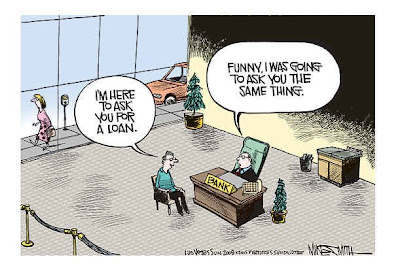From the interview: "I began to ask myself, everybody else has their gods, what are ours? What is the shape of our society, in the form of myth and legend? Who are our gods? Who are our evil gods and who are our good ones?
...I'm a guy who lives with a lot of questions, and I find that entertaining. If my life were to end tomorrow, it would be fulfilled in that manner. I would say, "the questions have been terrific."
Jack Kirby, a Comic Book Genius, Is Finally Remembered
By BRENT STAPLES, The New York Times
Published: August 26, 2007
The fear of being forgotten after death is endemic in the creative arts. In the case of the iconic comic book artist Jack Kirby, it happened while he was still alive. By the 1960s, Mr. Kirby had already revolutionized the comic book business more than once. Working as principal artist and in-house genius for Marvel, he created a voice and an aesthetic unmatched by any other company.
Marvel took his talents for granted and denied him the credit and compensation he clearly deserved. Worse, he was overshadowed by his loquacious and photogenic collaborator, Stan Lee, who became the public face of an enterprise that depended heavily on Mr. Kirby’s skills.
Mr. Kirby eventually quit, leaving behind characters like the Hulk, the Fantastic Four, the X-Men and the Silver Surfer, and ending what was easily the most fruitful collaboration in comic book history. His long and ugly battle with Marvel over the rights to his original artwork galvanized the artistic community and raised his public profile.
Still, by the time of his death in 1994, he was clearly worried that Mr. Lee would eclipse him in public memory and that history would deny him the recognition he deserved for breathing life into a collection of universally recognized superheroes who would eventually become movie stars.
History was late to the party, but it finally arrived. Thanks to renewed interest in Mr. Kirby’s work — and shout-outs from novelists like Michael Chabon and Jonathan Lethem — he is more widely known today than he was in the 1960s. Back then, those of us who read him haunted newsstands and drugstores, ripping each new issue right out of the deliveryman’s hands. Two books, including a long-awaited biography, are in the works, and the reprint industry is threatening to resurrect everything Mr. Kirby ever produced.
He was introduced to a broader public just last month when the United States Postal Service issued 20 stamps depicting Marvel characters. The images seemed deliberately chosen to maximize Marvel’s marketing opportunities. Even so, Mr. Kirby is credited on eight of the stamps and could have been credited on several more. After all, he did at least some work on nearly every major character Marvel produced.
Mr. Kirby did a lot more than just draw. As the critic Gary Groth so ably put it in The Comics Journal Library, “He barreled like a freight train through the first 50 years of comic books like he owned the place.” He mastered and transformed all the genres, including romance, Westerns, science fiction and supernatural comics, before he landed at Marvel.
He created a new grammar of storytelling and a cinematic style of motion. Once-wooden characters cascaded from one frame to another — or even from page to page — threatening to fall right out of the book into the reader’s lap. The force of punches thrown was visibly and explosively evident. Even at rest, a Kirby character pulsed with tension and energy in a way that makes movie versions of the same characters seem static by comparison.
The frenetic action and the rooftop fighting so common on the superhero set did not just materialize out of nowhere. Mr. Kirby remembered much of it from his Depression-era youth on New York’s Lower East Side, where, he once told an interviewer, the incessant fights among rival gangs were often staged up and down fire escapes and during running battles across tenement rooftops.
In a recent interview, his friend and biographer Mark Evanier described Mr. Kirby as a man so obsessed with giving voice to the characters that he had to give up just about everything else. He put aside driving, Mr. Evanier said, because he became so distracted that he would sometimes run off the road. Once he got a book plotted in his head he’d sit at the drafting table around the clock if necessary. With a fixation like that, he easily outproduced even his most prolific contemporaries.
With interest in Mr. Kirby growing — and his characters already marching across the screen — a movie of his life is clearly in order. Properly handled, the film could give an abused and neglected genius his full due while offering a fascinating glimpse into one of the most vibrant and creative eras in pop cultural history.
Posted on YouTube:
"I love Kirby, and we owe him more than words can say. He was just a working class joe trying to put food on the table. In the process, he tapped into the primordial Force that drives human dream and imagination, which are defining features of humanity itself. He was a force of nature - a shaman, a showman, and a Sherpa. "


